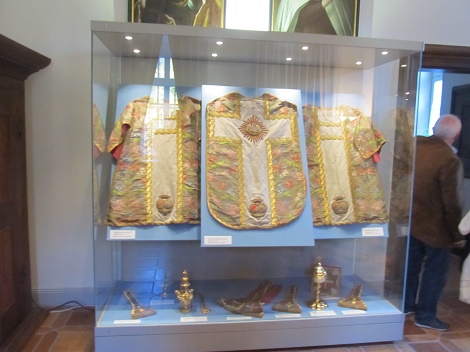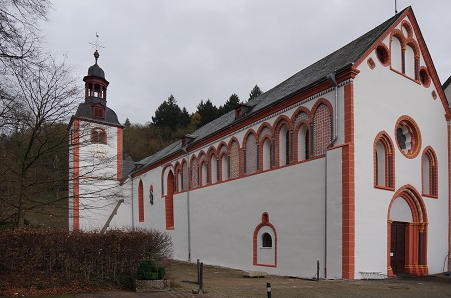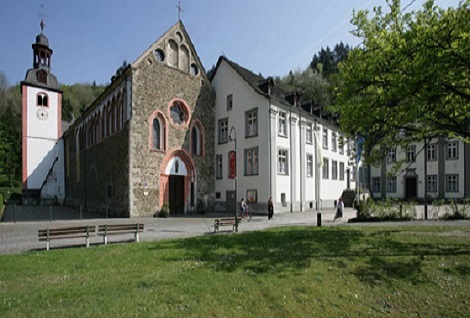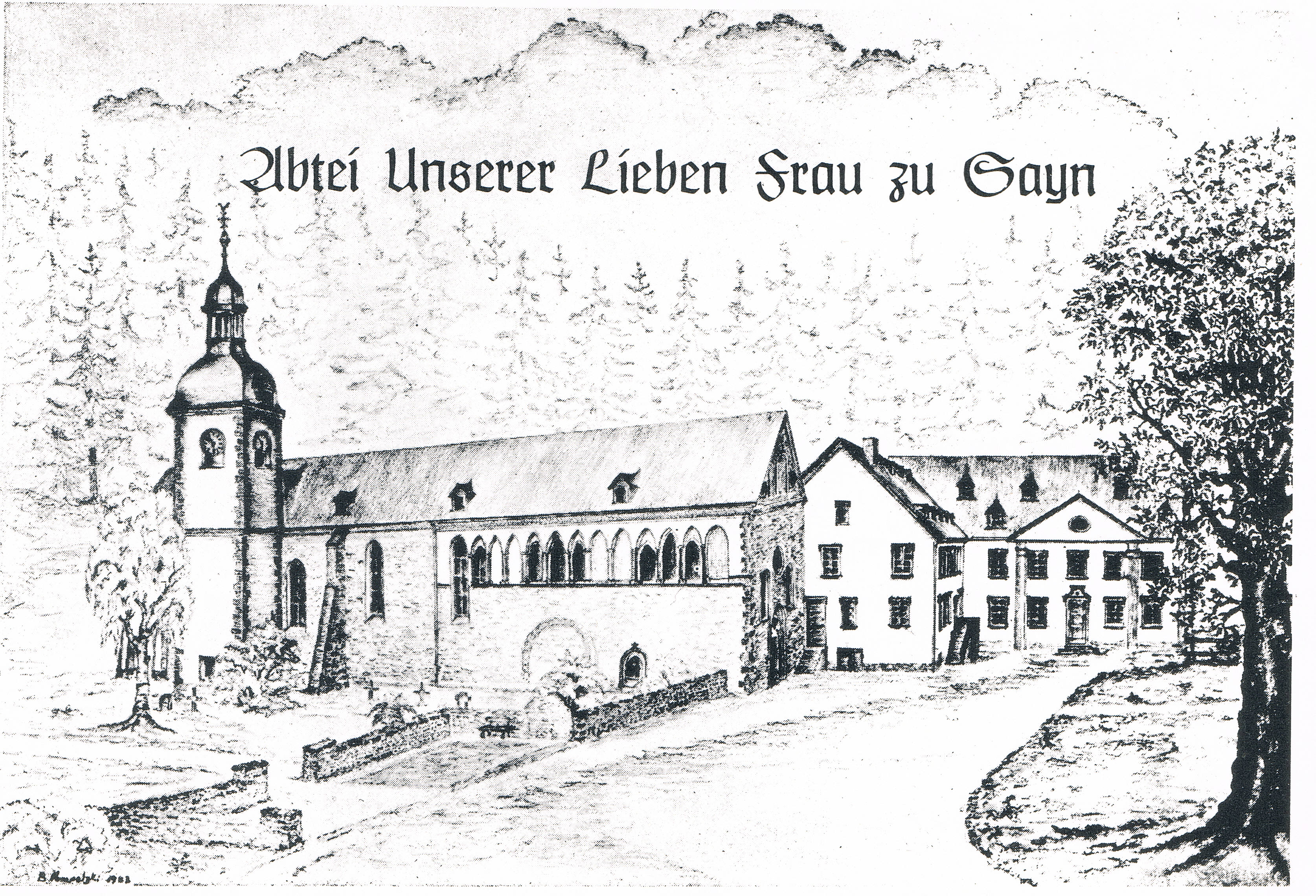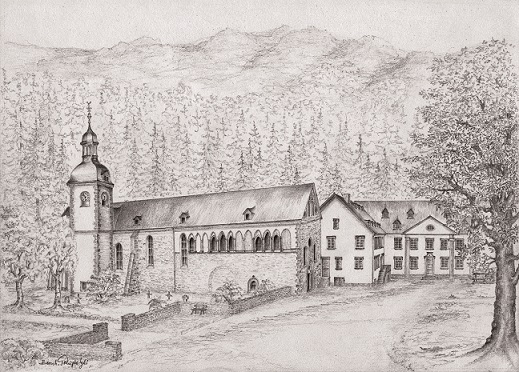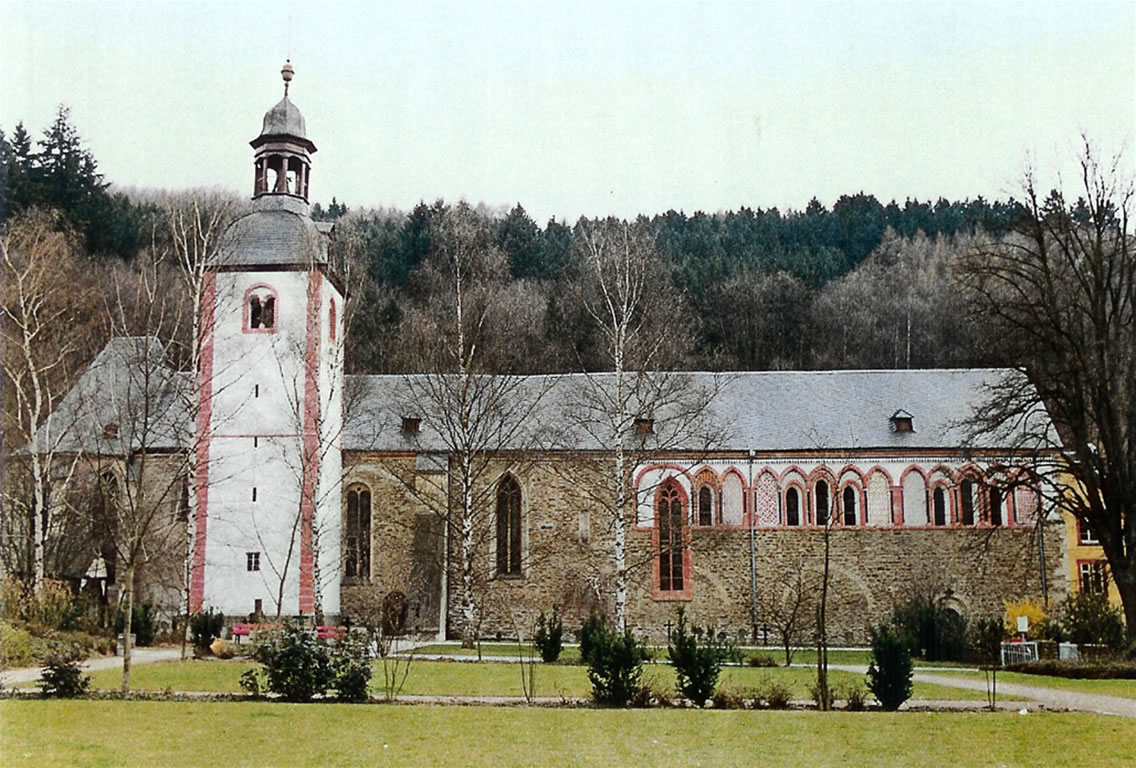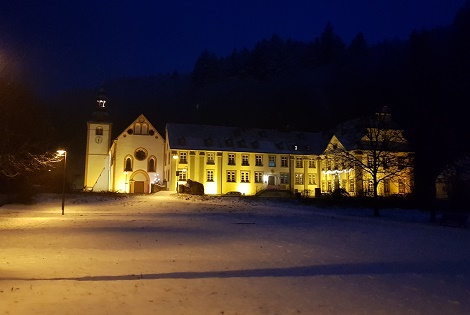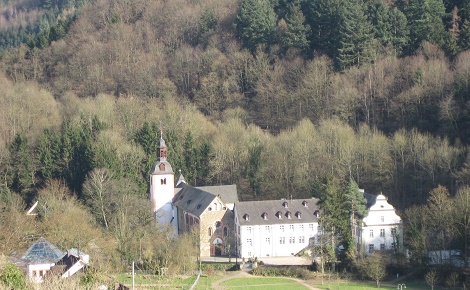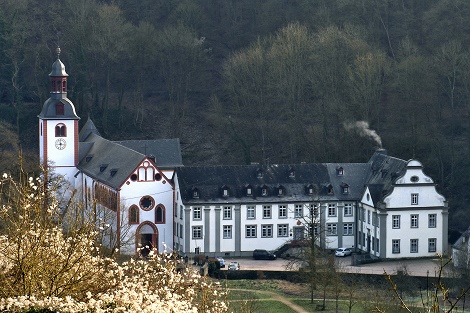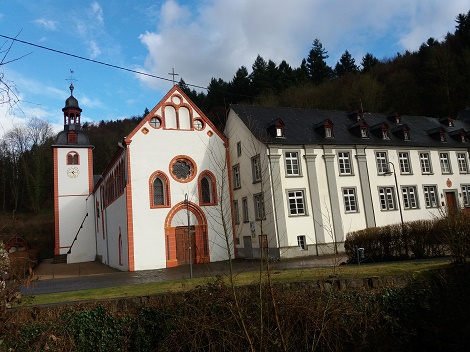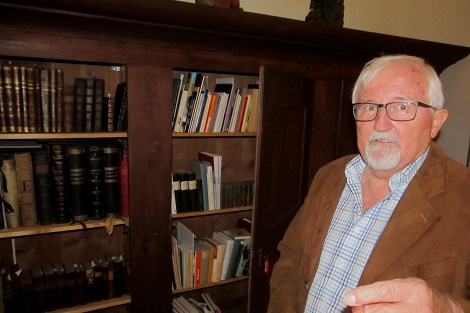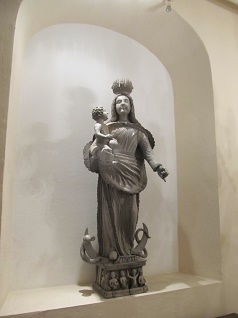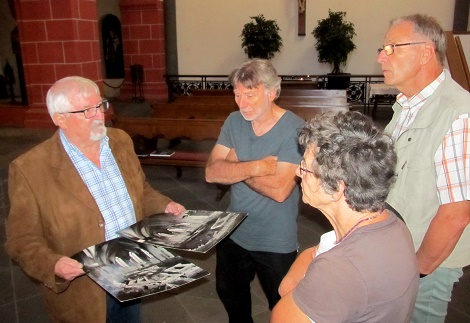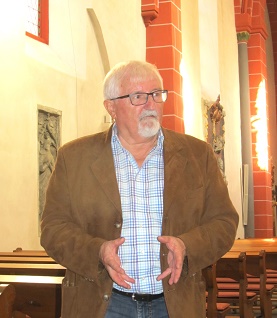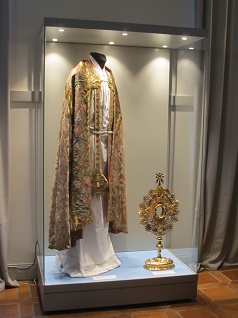New showroom - interesting history
from Peter Siebenmorgen
Experiencing the abbey church in Sayn as part of a guided tour is a special experience. During one of the regular public tours, Jürgen Mosen, as managing director of the Friends of Sayn Abbey, explained the building, its history and special objects. In front of the portal, Jürgen Mosen used an old drawing to explain the location of the abbey outside the former enclosure of the village. Founder Count Heinrich II was able to recruit canons of the Premonstratensian Order for the monastery. The tombs, the silent organ, baptismal fonts and furnishings were presented in an interesting and entertaining manner. With a great deal of expert knowledge, sensitivity and "stories behind the story", Jürgen Mosen once again succeeded in transporting the guests to different eras in the abbey and in bringing the history of the building and monastic life "to life". The walk through the nave led in the choir area also to the explanation of the glass windows with their coat of arms representations and to the high altar. Currently there, as in the pius choir, special light sculptures by the Viennese artist Philipp Graf von Schönborn are on display in shrine form, dealing with the themes of Elizabeth of Thuringia and Hildegard of Bingen. The artist is a close relative of Princess Gabriela zu Sayn-Wittgenstein-Sayn, he and the two saints have clear references to Sayn and its history. Through the restored cloister with its well house the way led to the rectory, where the Eulermadonna and other pictures in the hallway could be admired. The prelacy - the abbot's building of the former abbey - was completed in 1718 under Abbot Engelbert Colendal.
On the occasion of the 300th anniversary of this prelacy, the catholic parish Maria Himmelfahrt in Bendorf Sayn and the Förderkreis Abtei Sayn e.V. have set up an exhibition room in the prelacy, which was blessed and opened on the Day of the Monument in September 2018. In the exhibition room, chasubles from the mid-18th century, sacred objects from the Baroque and Historicist periods, documents from the early days of the monastery and historical books are displayed and also explained during guided tours. For example, in a showcase the choir coat from the period between 1750 and 1755, donated by Jakob Georg von Spangenberg, a minister of the Electorate of Trier with residence in KO-Ehrenbreitstein. He was a friend of the Sayner abbot Ohm. Spangenberg and his wife are also buried in the choir room of the abbey. A high baroque gilded monstrance is also exhibited in the showcase. The chasubles for a high mass with priest and 2 deacons from the same period were also donated by Spangenberg, including the stole, the maniple and the borsum. In this display case there is also a baroque gilded ciborium, a chalice, from around 1750. Also an incense burner from around 1830, a shuttle from around 1860, each made of brass gilded. In the room there is a lecture cross from around 1860 made of brass, the cross silver-plated, the representations on the cross gold-plated. It is still carried into the church on the occasion of solemn mass celebrations in front of the celebrants. In a table showcase two old documents from 1347 and 1427 are exhibited in the original, they belong to the oldest documents of the parish archive still existing in the original. Also in this showcase is the handwritten will of Jakob Georg Spangenberg from 1777 with the corresponding seals. His obituary is also displayed here. In the drawers below, other objects available in the abbey, in the parish, in the archives or at the Förderkreis are to be shown alternately, which can then be permanently displayed at a later date. At present, among other things, two Stations of the Cross panels are stored, which originate from the original castings of Samuel and Fritz Weigelt. These are zinc cast panels as they were placed in the castle park around 1863, but most of them were lost there and replaced by new motifs in the 1990s. In an old parament cabinet from the 19th century some old books from the monastery library are displayed. Unfortunately, after the dissolution of the monastery most of the books were taken to Wiesbaden to the then sovereign. This cabinet also contains the local history collection of the recently deceased local historian Hans-Peter Kleber, which can also be viewed there for research purposes by appointment. Two pieces from the Sayner Hütte are also still in the exhibition room. One is a brass candlestick from 1838, which was made by Heinrich Zumpft, and a desk from before the turn of the century, which was acquired by the parish after the smelter was closed in 1926. The exhibition room is part of the program during registered guided tours and public tours. However, the exhibits can also be viewed every Thursday morning. Here, too, it is advisable to contact the Förderkreis Abtei Sayn e.V. by e-mail at the web address führungen@abtei-sayn. de or by phone at Dietrich Schabow, 02622 - 4161 or Jürgen Mosen, 02622 -14174
Pictures from Peter Siebenmorgen




